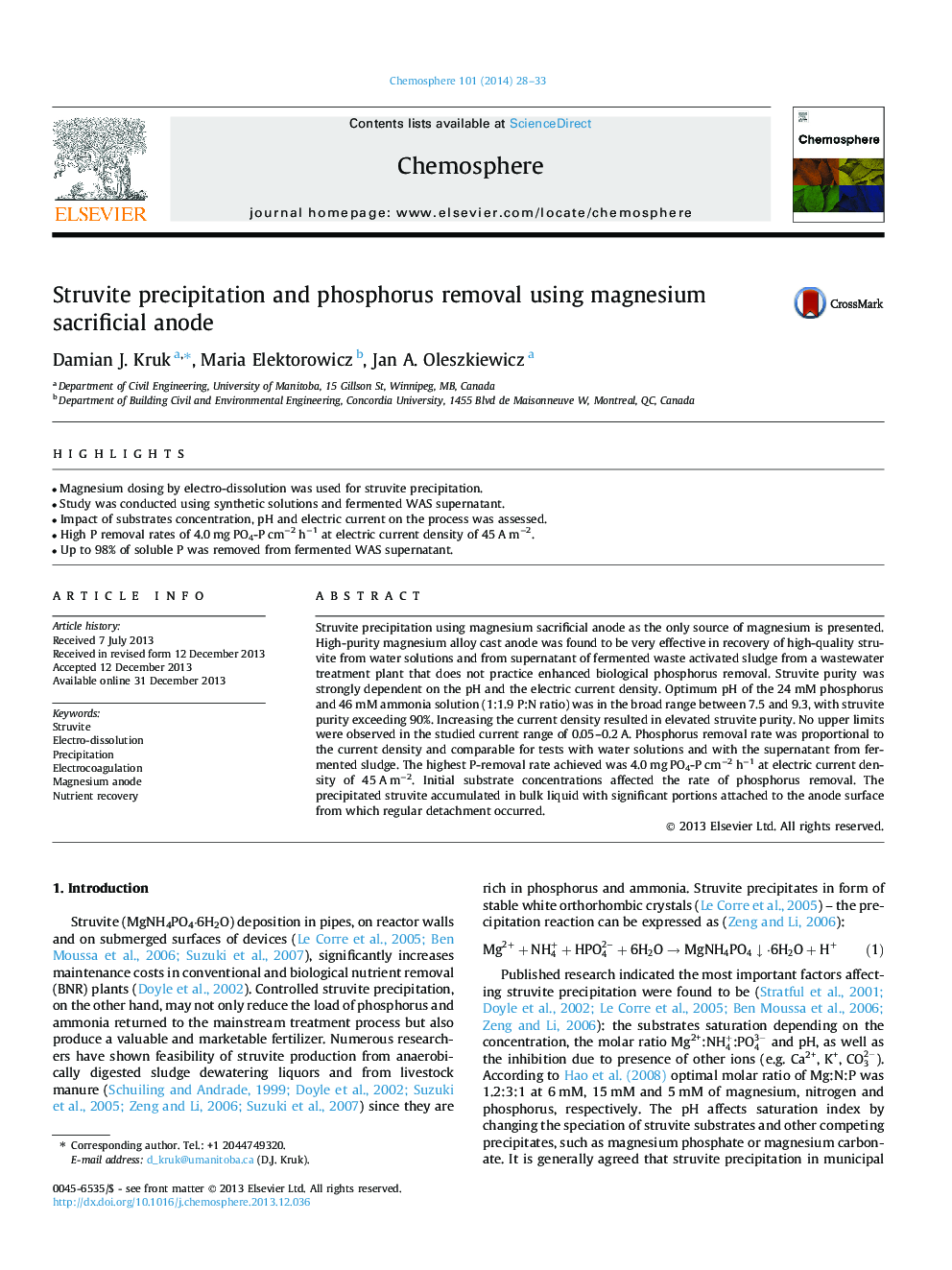| Article ID | Journal | Published Year | Pages | File Type |
|---|---|---|---|---|
| 4408903 | Chemosphere | 2014 | 6 Pages |
•Magnesium dosing by electro-dissolution was used for struvite precipitation.•Study was conducted using synthetic solutions and fermented WAS supernatant.•Impact of substrates concentration, pH and electric current on the process was assessed.•High P removal rates of 4.0 mg PO4-P cm−2 h−1 at electric current density of 45 A m−2.•Up to 98% of soluble P was removed from fermented WAS supernatant.
Struvite precipitation using magnesium sacrificial anode as the only source of magnesium is presented. High-purity magnesium alloy cast anode was found to be very effective in recovery of high-quality struvite from water solutions and from supernatant of fermented waste activated sludge from a wastewater treatment plant that does not practice enhanced biological phosphorus removal. Struvite purity was strongly dependent on the pH and the electric current density. Optimum pH of the 24 mM phosphorus and 46 mM ammonia solution (1:1.9 P:N ratio) was in the broad range between 7.5 and 9.3, with struvite purity exceeding 90%. Increasing the current density resulted in elevated struvite purity. No upper limits were observed in the studied current range of 0.05–0.2 A. Phosphorus removal rate was proportional to the current density and comparable for tests with water solutions and with the supernatant from fermented sludge. The highest P-removal rate achieved was 4.0 mg PO4-P cm−2 h−1 at electric current density of 45 A m−2. Initial substrate concentrations affected the rate of phosphorus removal. The precipitated struvite accumulated in bulk liquid with significant portions attached to the anode surface from which regular detachment occurred.
